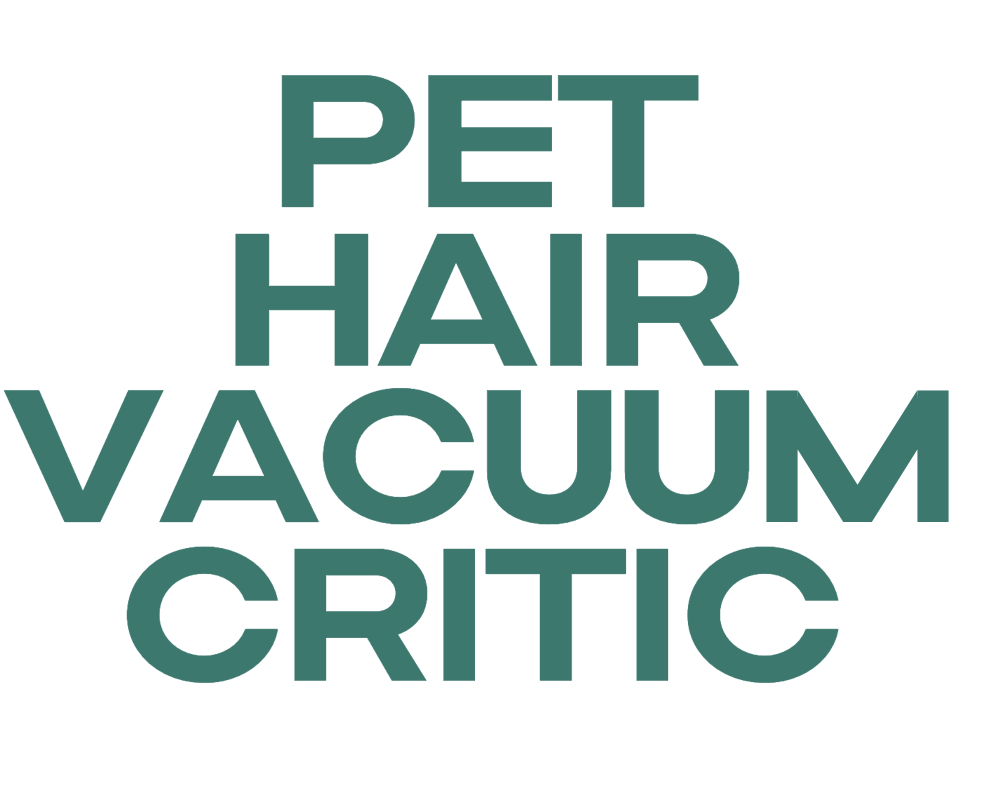Guides & FAQs
Where Can You Donate Pet Hair
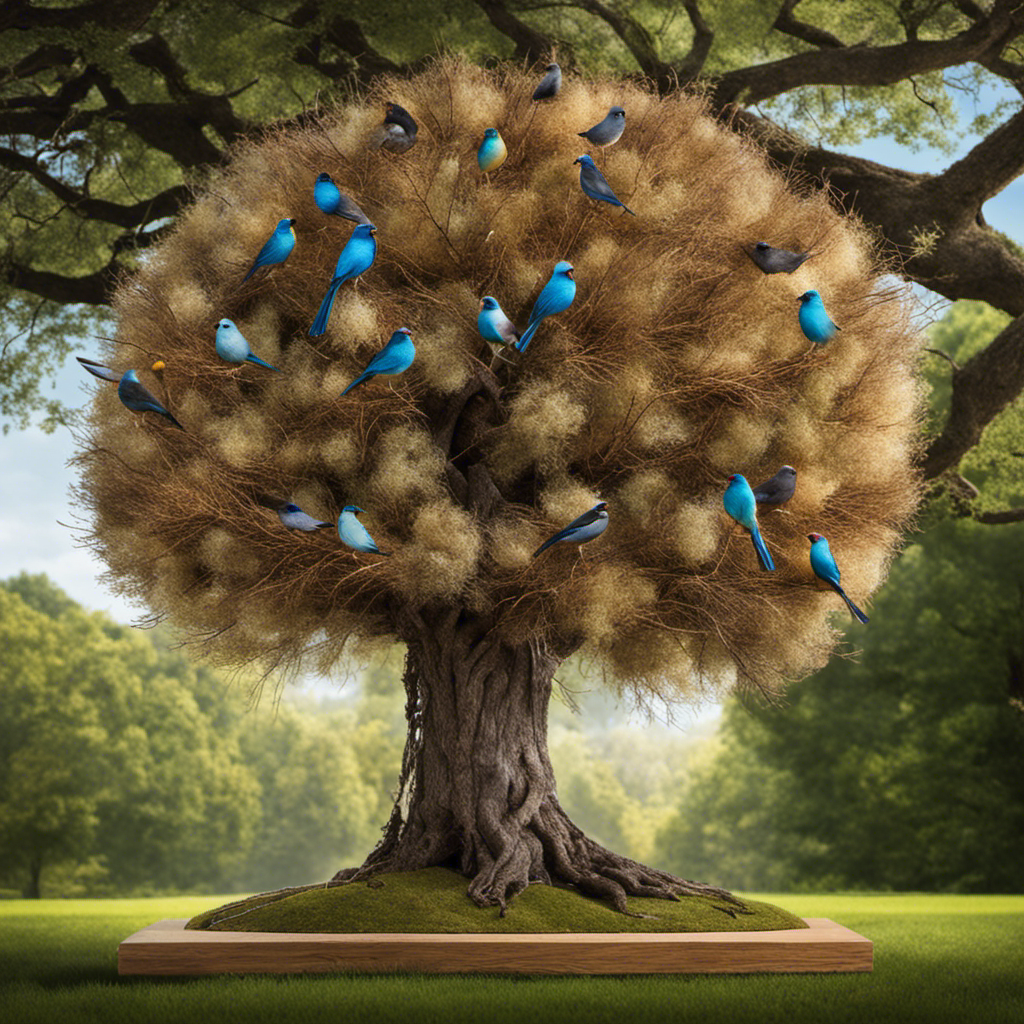
Did you know that one dog can produce up to two pounds of fur per year? That’s a lot of hair! Instead of throwing it away, have you considered donating it?
There are actually many organizations and projects that would love to put your pet’s hair to good use. From animal shelters and wildlife rehabilitation centers to organic gardening projects and bird nest building organizations, there are plenty of places where you can donate pet hair and make a positive impact.
Let’s dive in and explore the possibilities!
Key Takeaways
- Animal shelters and pet therapy programs accept pet hair donations for creating mats and nesting material.
- Wildlife rehabilitation centers collaborate with pet therapy programs for veterans.
- Pet-friendly nursing homes understand the positive effects of animals on residents’ lives and offer pet therapy programs.
- Bird nest building organizations collaborate with bird watching groups and conduct research and monitoring programs for valuable bird data.
Local Animal Shelters
I can donate my pet hair to local animal shelters. Many animal shelters accept donations of pet hair because it can be used to create mats and nesting material for the animals in their care. This provides them with comfort and warmth, especially during colder months. Did you know that pet hair can be used for various purposes, including pet therapy programs and even pet grooming competitions? Additionally, some shelters use pet hair for pet therapy programs, where animals are brought to hospitals or nursing homes to provide comfort and companionship to patients. It’s amazing how something as simple as pet hair can make a difference in the lives of both animals and humans.
Speaking of making a difference, let’s explore another place where pet hair donations can be beneficial – wildlife rehabilitation centers.
Wildlife Rehabilitation Centers
Visiting wildlife rehabilitation centers allows me to contribute to the care of injured animals. These centers play a crucial role in wildlife conservation efforts by providing medical treatment, rehabilitation, and release programs for injured or orphaned animals. It’s truly a rewarding experience to witness the dedication and passion of the staff as they work tirelessly to restore these animals back to health and freedom.
- Wildlife rehabilitation centers provide a safe and nurturing environment for injured animals to heal and recover.
- They offer specialized care and treatment tailored to the specific needs of each animal.
These centers also play a vital role in educating the public about wildlife conservation and the importance of protecting natural habitats.
- Wildlife rehabilitation centers often collaborate with pet therapy programs for veterans, offering a unique and therapeutic experience for both the animals and the veterans.
- By supporting these centers, we contribute to the preservation of our wildlife and create a positive impact on the lives of both animals and humans.
Pet-Friendly Nursing Homes
Exploring pet-friendly nursing homes allows me to see firsthand the positive effects that animals have on the residents’ well-being and overall quality of life. These senior living communities understand the importance of companionship and have embraced pet therapy programs to enhance the lives of their residents.
Pets, whether they’re dogs, cats, or even birds, provide comfort, emotional support, and a sense of purpose to the elderly. Interacting with animals can reduce stress, decrease feelings of loneliness, and improve mental and physical health.
The presence of pets in these nursing homes not only brings joy to the residents but also creates a sense of community among them. It’s heartwarming to witness the smiles on their faces as they interact with their furry friends.
Pet-friendly nursing homes truly understand the power of animals in fostering a positive and enriching environment for their residents.
Bird Nest Building Organizations
Being part of a bird nest building organization has allowed me to witness the incredible dedication and passion of volunteers who work together to create safe and nurturing homes for our feathered friends. It’s truly inspiring to see people come together, armed with their knowledge and skills, to make a difference in the lives of birds.
These organizations not only provide shelter for birds but also contribute to the preservation of their habitats and the overall biodiversity of our planet. Here are some key aspects of bird nest building organizations that make them remarkable:
-
Collaboration with bird watching groups, promoting awareness and appreciation of birds in their natural habitats.
-
Utilizing eco-friendly crafts and materials, ensuring that nests are safe and sustainable for birds and the environment.
-
Conducting research and monitoring programs to gather valuable data on bird populations and behavior.
-
Educating the community about the importance of bird conservation and the role of nest building organizations.
-
Creating opportunities for individuals to get involved and make a positive impact on bird populations.
Through the efforts of these dedicated volunteers, bird nest building organizations are making a significant contribution to the welfare of birds and the conservation of our natural world.
Organic Gardening Projects
Working on organic gardening projects has allowed me to cultivate my own food and contribute to a more sustainable and environmentally-friendly way of living. One of the key aspects of organic gardening is the use of composting techniques. Composting is the process of breaking down organic materials, such as food scraps and yard waste, into nutrient-rich soil that can be used to nourish plants.
By composting, I’m able to reduce waste, improve soil quality, and minimize the need for chemical fertilizers. Another important aspect of organic gardening is natural pest control. Instead of relying on harmful pesticides, I use natural methods to deter pests. This includes companion planting, which involves planting certain crops together to repel pests, as well as using natural repellents like garlic spray or diatomaceous earth.
Organic gardening not only allows me to grow healthy, delicious food, but it also promotes a healthier planet for future generations.
Frequently Asked Questions
Can I Donate Pet Hair That Has Been Treated With Flea and Tick Prevention Products?
Yes, you can donate pet hair that has been treated with flea and tick prevention products. However, it is important to follow guidelines for collecting pet hair to ensure its safety and effectiveness for donation.
Are There Any Specific Guidelines I Should Follow When Collecting and Donating Pet Hair?
When it comes to collecting and donating pet hair, there are some guidelines to follow. I’m here to share eco-friendly ways to repurpose pet hair and ensure it gets put to good use.
Can I Donate Pet Hair From Any Type of Animal, or Are There Specific Animals That Organizations Accept?
Different organizations accept pet hair from various types of animals. Donating pet hair can be used for different purposes, such as making blankets or cleaning up oil spills. It’s an opportunity to make a positive impact.
How Does Donating Pet Hair to Bird Nest Building Organizations Benefit the Birds?
Donating pet hair to bird nest building organizations benefits bird populations by providing them with essential nesting material. It’s crucial for birds to have suitable materials to build their nests, ensuring their breeding success and the survival of their offspring.
Are There Any Other Unique Organizations or Projects That Accept Pet Hair Donations Aside From Those Mentioned in the Article?
There are several unique pet hair donation projects that accept pet hair for alternative uses. These projects provide opportunities to repurpose pet hair for things like crafting, insulation, and even making yarn.
Conclusion
After researching various options, I’ve found that there are several places where you can donate pet hair.
Local animal shelters often use pet hair to create bedding for animals in need.
Wildlife rehabilitation centers also accept pet hair to help provide warmth and comfort to orphaned or injured animals.
Pet-friendly nursing homes use donated pet hair to create sensory stimulation items for their residents.
Bird nest building organizations and organic gardening projects also utilize pet hair for various purposes.
By donating pet hair, you can make a meaningful contribution to these organizations and help create a better world for animals and humans alike.
Carter is a valued member of our team at Pet Hair Vacuum Critic, where his passion for pets and exceptional writing skills come together to create informative and engaging content for our readers.
Carter’s journey into the world of pet care and pet hair management began with his own furry companions. As a pet owner, he understands the daily challenges of keeping a clean and tidy home while providing a loving environment for his pets. This personal experience drives his dedication to helping fellow pet owners navigate the world of pet hair removal and management.
Guides & FAQs
Why Would Creamatory Send Some of a Pets Hair to the Pet Woner
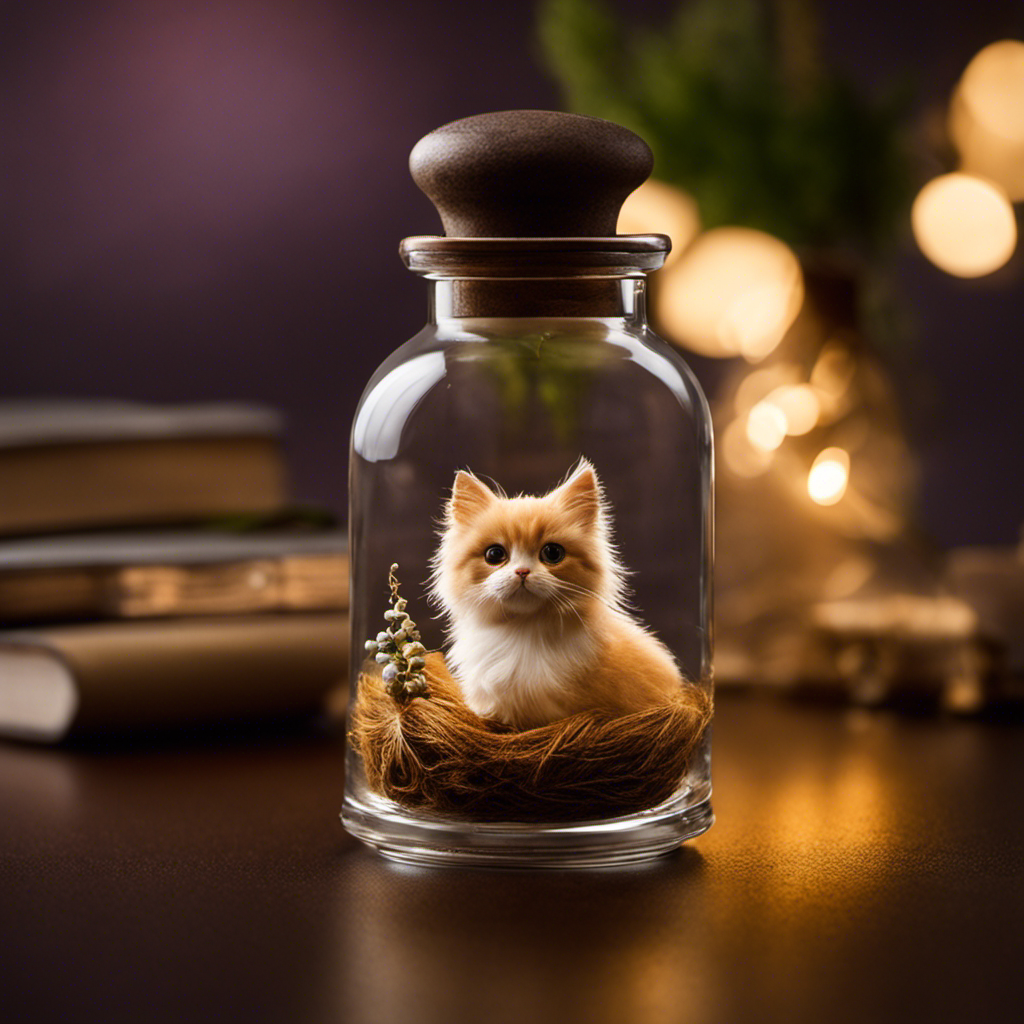
Have you ever wondered why a pet crematorium would send you a lock of your beloved pet’s fur as a pet owner? Although it may seem unusual initially, this gesture carries significant meaning.
In this article, we will explore the emotional connection between pet owners and their furry friends, the symbolism of receiving a lock of their hair, and the healing power it can provide.
Join me as we delve into the fascinating world of honoring our pets and finding comfort in their memory.
Key Takeaways
- Receiving a lock of their pet’s hair allows owners to feel their presence even after they’re gone.
- The hair serves as a tangible reminder of the bond shared and brings back cherished memories.
- Receiving the pet’s hair helps pet owners feel a continued connection to their furry friend.
- The hair holds deeper meaning and significance beyond being a physical memento.
The Significance of Receiving Part of Your Pet’s Hair From a Crematory
I really appreciate receiving part of my pet’s hair from the crematory because it serves as a meaningful keepsake of their presence in my life. Understanding grief and the deep emotional connection we’ve with our pets is essential in comprehending the significance of this gesture.
Losing a beloved pet can be a devastating experience, and finding ways to memorialize them can bring comfort and solace during the grieving process. Having a tangible reminder, like a lock of their hair, allows me to feel their presence even after they’re gone. It serves as a physical connection to the bond we shared and brings back cherished memories. This small token helps me honor their memory and provides a sense of closure.
Transitioning to the next section, let’s explore why pet owners are sent some of their pet’s hair and the emotional connection behind it.
Understanding the Emotional Connection: Why Pet Owners Are Sent Some of Their Pet’s Hair
Receiving a small amount of their beloved companion’s hair can help pet owners feel a continued connection to their furry friend. Understanding grief and the role of rituals in the healing process is crucial when it comes to comprehending why pet owners are sent some of their pet’s hair.
A lock of hair, carefully packaged, arrives in the mail, an intimate memento that holds memories and love. The touch of their fur against our skin, like a gentle caress, brings comfort and solace. As we hold that strand of hair in our hands, we can almost feel their presence, their warmth, their unconditional love.
The act of receiving their pet’s hair becomes a ritual, a way to honor their memory and continue to celebrate their life. It provides a tangible connection to a beloved companion who’s passed on. It helps to ease the pain of loss and allows for a sense of closure.
In these small strands of hair, we find solace, understanding, and a way to keep our furry friends close, even after they’re gone.
Exploring the Symbolism: What Does Receiving a Lock of Your Pet’s Hair Mean
Opening the package to find a lock of my furry friend’s hair felt like receiving a cherished symbol of their presence and love. It was more than just a physical memento; it held deeper meaning and significance.
Exploring the spiritual aspect of this gesture, it became apparent that the hair represented a spiritual connection between me and my beloved pet. In many cultures, hair is regarded as a powerful symbol of life force and vitality. By sending me this keepsake, the crematory acknowledged the profound bond I shared with my pet.
Furthermore, the therapeutic benefits of receiving a lock of my pet’s hair can’t be overstated. It provided comfort during the grieving process, offering a tangible reminder of their presence. This simple act of sending their hair helped bring closure and served as a source of solace during this difficult time.
The Healing Power of Keepsakes: How Pet Hair Can Provide Comfort and Closure
Finding comfort and closure in the midst of grief, the lock of my furry friend’s hair served as a tangible reminder of their presence and the love we shared. It may seem strange to some, but for those who’ve experienced the loss of a beloved pet, these keepsakes hold a healing power that’s difficult to put into words.
• The softness of the hair, much like the touch of their fur against my skin, brings a sense of warmth and familiarity, providing solace in moments of sadness.
• As I run my fingers through the strands, memories come flooding back – the way they’d curl up next to me on the couch, the sound of their purring as they nuzzled against my cheek.
-
These physical reminders offer a sense of closure, allowing me to hold onto the bond we shared even after their physical presence is gone.
-
The lock of hair becomes a connection, a way to keep them close and find solace in their memory.
Honoring Your Pet’s Memory: Why Crematories Include a Portion of Hair in Their Services
When I brought my beloved pet to the crematory, I was surprised to learn that they include a portion of hair in their services as a way to honor and remember our furry friends. This small but significant gesture highlights the importance of pet memorials and the role that crematories play in the grieving process.
Pet memorials serve as a tangible reminder of the love and companionship our pets brought into our lives. They provide comfort and closure during the difficult grieving process. Including a portion of hair in the cremation process allows us to hold onto a physical memento of our cherished pet, providing a source of solace and a tangible connection to their memory.
This thoughtful gesture from the crematory acknowledges the deep bond we share with our pets and helps us navigate the emotional journey of saying goodbye.
Frequently Asked Questions
How Is the Pet’s Hair Collected and Preserved by the Crematory?
When a pet passes away, crematories collect and preserve their hair as a way to honor their memory. Techniques like gentle brushing or shaving are used to collect the hair, which is then carefully preserved and sent to the pet owner as a keepsake.
Are There Any Specific Guidelines or Instructions for Handling and Storing the Received Lock of Hair?
When it comes to handling and storing the lock of hair sent by the crematory, there are specific guidelines and instructions to follow. It’s important to handle it with care and store it in a safe place to cherish the memories of our beloved pet.
Can the Pet Owner Choose to Receive a Different Keepsake Item Instead of Their Pet’s Hair?
As a pet owner, you have the option to choose alternative keepsake options instead of receiving your pet’s hair. We understand the sentimental value and offer a range of options to honor your beloved pet’s memory.
Do All Crematories Include a Portion of Hair in Their Services, or Is It an Optional Offering?
Sending a portion of a pet’s hair to the pet owner is an optional offering by crematories. It acknowledges the emotional connection owners have to their pet’s hair and provides a physical keepsake for comfort and remembrance.
Are There Any Cultural or Religious Significances Associated With Receiving a Lock of a Pet’s Hair From a Crematory?
Receiving a lock of a pet’s hair from a crematory can have cultural significance and religious symbolism. It is a way for pet owners to hold onto a physical connection and honor their beloved companion’s memory.
Conclusion
In conclusion, receiving a lock of your beloved pet’s hair from a crematory holds great significance. It symbolizes the emotional connection we’d with our furry companions and provides comfort and closure during the grieving process.
As the saying goes, ‘A lock of hair is a strand of love that forever binds us.’ Crematories understand the healing power of keepsakes and honor our pets’ memory by including this meaningful gesture in their services.
Janet is an esteemed member of our dedicated team at Pet Hair Vacuum Critic, where her profound passion for pets and her exceptional writing talents combine to produce informative and engaging content for our readers.
Janet’s journey into the realm of pet care and pet hair management stems from her personal experiences as a devoted pet owner. Her firsthand understanding of the challenges and joys that come with living alongside furry companions fuels her dedication to assisting others in navigating the intricate world of pet hair removal and management.
Guides & FAQs
Why We Need to Cut the Pet Feet Bottom Hair

As a pet owner, I understand the importance of ensuring our treasured pets are happy and healthy.
One area that often gets overlooked is the hair on their feet. But let me tell you, cutting the bottom hair of their paws is crucial.
It not only prevents potential hazards, but also ensures their overall well-being.
In this article, I will delve into the reasons why we need to take this simple yet vital step in maintaining our pets’ feet.
Key Takeaways
- Regular grooming prevents foot infections.
- Overgrown hair can trap dirt, debris, and bacteria, leading to infections and inflammation.
- Trimming hair improves mobility and prevents discomfort and musculoskeletal issues.
- Maintaining well-groomed pet feet reduces the risk of infections, improves mobility, enhances traction, and promotes overall health and happiness.
The Importance of Regular Grooming for Pet Feet
I need to regularly groom my pet’s feet to keep them healthy and prevent any issues.
Grooming my pet’s feet is essential for preventing foot infections and improving their mobility. Regular grooming helps to remove dirt, debris, and excess hair from their paws, reducing the risk of infections caused by bacteria or fungi.
By keeping their feet clean and dry, I can prevent the growth of harmful microorganisms and the development of painful conditions such as fungal infections or hot spots.
Trimming the hair on their feet also contributes to better mobility, as excessive hair can cause discomfort and hinder their ability to walk or run properly.
Overall, regular grooming of my pet’s feet is crucial in maintaining their overall health and well-being.
Understanding the Potential Dangers of Overgrown Bottom Hair
Understanding the potential dangers of having overgrown hair on the bottom of my pet’s feet is crucial. Neglecting to regularly trim this hair can lead to a variety of potential risks and health concerns.
When hair on the bottom of a pet’s feet becomes too long, it can become matted, trapping dirt, debris, and bacteria. This can result in painful infections and inflammation.
Additionally, overgrown hair can cause pets to have difficulty walking or standing properly, leading to discomfort and potential musculoskeletal issues.
It’s important to trim this hair to prevent these problems and maintain your pet’s overall health and well-being. Regular grooming and keeping the hair on the bottom of your pet’s feet at a manageable length is a simple yet effective way to ensure their comfort and prevent potential health issues.
Tips for Safe and Effective Pet Feet Hair Trimming
Regularly trimming the hair on my pet’s feet is essential for their safety and comfort. Not only does it prevent matting and tangling, but it also reduces the risk of debris getting stuck between their toes. To achieve safe and effective pet feet hair trimming, it’s important to have the proper tools. A good pair of grooming scissors with rounded tips is ideal for this task. Additionally, using a comb or brush specifically designed for pets can help in detangling the hair before trimming.
To minimize discomfort during the trimming process, there are a few techniques that can be followed. First, it’s crucial to approach the task with patience and gentleness. Taking breaks in between cuts can help to prevent any pulling or tugging. Secondly, keeping the pet calm and relaxed is key. Offering treats or using positive reinforcement can help create a positive association with the trimming process. Lastly, trimming small amounts of hair at a time and gradually working towards the desired length can help prevent any accidental cuts or injuries.
Common Mistakes to Avoid When Cutting Pet Feet Bottom Hair
It’s important to avoid rushing the process when trimming my pet’s feet to prevent any accidental injuries. When it comes to cutting the bottom hair on my pet’s feet, there are some common mistakes that I need to avoid.
One of the most common mistakes is cutting too close to the skin, which can cause pain and potential bleeding. Another mistake is using dull or improper tools, which can lead to uneven cuts and discomfort for my pet. It’s also important to be mindful of the direction of the hair growth and to trim in small, controlled motions.
By avoiding these common mistakes and using proper trimming techniques, I can ensure a safe and effective trim for my pet’s feet.
Now, let’s explore the benefits of maintaining well-groomed pet feet.
Benefits of Maintaining Well-Groomed Pet Feet
Maintaining well-groomed feet for my pet has several benefits, such as preventing infections and discomfort. Regularly trimming the hair on my pet’s feet is an important preventative measure to ensure their overall health and happiness. Here are three key benefits of maintaining well-groomed pet feet:
-
Reduced risk of infections: Excess hair on the feet can trap dirt, debris, and moisture, creating the perfect breeding ground for bacteria and fungi. By regularly trimming the hair, I can minimize the risk of infections and keep my pet’s feet clean and healthy.
-
Improved mobility: Long hair on the feet can cause discomfort and restrict my pet’s movement. By keeping the hair properly groomed, I can help them walk, run, and play without any hindrance.
-
Enhanced traction: Overgrown hair on the feet can reduce traction, making it difficult for my pet to walk on smooth surfaces. Trimming the hair allows for better grip and stability, preventing slips and falls.
Frequently Asked Questions
How Often Should I Trim the Bottom Hair of My Pet’s Feet?
I trim the bottom hair of my pet’s feet every 4-6 weeks to prevent matting and discomfort. Signs that it needs trimming include excessive hair between the pads, difficulty walking, and debris getting stuck.
Can I Use Regular Scissors to Trim My Pet’s Bottom Hair, or Do I Need Special Grooming Tools?
Sure, I can help! When it comes to trimming your pet’s bottom hair, using regular scissors may not be the best idea. Special grooming tools provide precision and prevent accidents. Let me share some pros and cons, as well as alternative methods and tips!
Are There Any Specific Breeds That Are More Prone to Overgrown Bottom Hair?
Certain breeds, such as Poodles, Bichon Frises, and Shih Tzus, are more prone to overgrown bottom hair. Regular grooming and trimming are essential to prevent matting, discomfort, and hygiene issues in these breeds.
What Are the Signs That My Pet’s Bottom Hair Needs Trimming?
When it comes to signs of overgrown pet hair, it’s important to pay attention to excessive licking, odor, and difficulty walking. To trim your pet’s bottom hair, use sharp scissors and be gentle.
Are There Any Alternative Methods to Trim My Pet’s Bottom Hair if They Are Resistant to Grooming?
If your pet is resistant to grooming, there are alternative methods to trim their bottom hair. Some tips include using treats, distractions, and positive reinforcement. It’s important to be patient and gentle to ensure their comfort and safety.
Conclusion
In conclusion, trimming the bottom hair of our pets’ feet is vital for their overall well-being. Just like pruning a garden, it allows their paws to blossom and thrive.
By removing excess hair, we prevent potential dangers such as matting, debris accumulation, and discomfort. Regular grooming ensures that our furry friends can confidently walk, run, and explore the world around them.
So let’s give our pets the gift of well-groomed feet, paving the way for a happy and healthy journey ahead.
Janet is an esteemed member of our dedicated team at Pet Hair Vacuum Critic, where her profound passion for pets and her exceptional writing talents combine to produce informative and engaging content for our readers.
Janet’s journey into the realm of pet care and pet hair management stems from her personal experiences as a devoted pet owner. Her firsthand understanding of the challenges and joys that come with living alongside furry companions fuels her dedication to assisting others in navigating the intricate world of pet hair removal and management.
Guides & FAQs
Woman Who Knits From Pet Hair

I am the woman who turns fluffy fur into cozy creations. Driven by a passion for knitting and a strong bond with my furry friends, I have honed the skill of transforming pet hair into yarn.
In this article, I’ll share the benefits, techniques, and patterns that can transform your pet’s shed hair into unique and sustainable garments. Join me as we unravel the secrets of this fascinating craft and learn how to care for these one-of-a-kind knitted treasures.
Key Takeaways
- Collecting and preparing pet hair for knitting requires careful grooming and specific techniques to ensure clean and undamaged fibers.
- Using pet hair as yarn allows for the creation of unique and sentimental keepsakes, adding a personal touch to knitting projects and fostering a deeper emotional bond with pets.
- Discovering unique patterns and repurposing pet hair can evoke nostalgia and create meaningful items, while also providing satisfaction from using alternative materials.
- Caring and maintaining knitted items made from pet hair involves regular grooming of pets, proper storage, and gentle washing to keep the items clean, soft, and free from excessive shedding.
The Art of Collecting Pet Hair for Knitting
I love collecting pet hair for knitting because it adds a personal touch to my projects. Collecting pet hair requires careful grooming and brushing of my furry friends. I use specific techniques to gather the hair, such as combing it gently to avoid damaging the fibers.
It’s important to collect hair that’s clean and free from dirt or debris. I often mix different types of pet hair to create unique textures and colors in my knitting projects. By collecting pet hair, I’m able to utilize a sustainable and eco-friendly resource, repurposing something that would otherwise go to waste.
Understanding the benefits of using pet hair as yarn allows me to create one-of-a-kind pieces that aren’t only beautiful but also hold sentimental value.
Understanding the Benefits of Using Pet Hair as Yarn
Using pet hair as yarn has numerous benefits, such as creating unique and sentimental keepsakes. It’s fascinating to explore the different types of pet hair suitable for knitting and discover creative ways to incorporate them into various projects.
Here are some emotional benefits of using pet hair as yarn:
-
Nostalgia: Knitting with pet hair allows us to preserve a physical connection to our beloved furry friends, creating a sense of comfort and nostalgia.
-
Personalization: Incorporating pet hair into knitting projects adds a personal touch, making each item truly one-of-a-kind and special.
-
Connection: Working with pet hair yarn fosters a deeper emotional bond with our pets, reminding us of the unconditional love they provide.
Techniques for Preparing Pet Hair for Knitting Projects
To prepare pet hair for knitting projects, it’s important to carefully wash and comb the hair to remove any dirt or debris.
Cleaning pet hair for knitting projects is essential to ensure that the final product is clean and free from any unwanted particles.
Firstly, I gently wash the pet hair using a mild shampoo and lukewarm water. This helps to remove any dirt or oils that may be present.
After thoroughly rinsing, I gently squeeze out the excess water and lay the hair flat to dry.
Once dry, I use a fine-toothed comb to remove any tangles or knots.
Dealing with allergies when working with pet hair yarn can be challenging. I recommend wearing gloves and a mask to minimize exposure to allergens.
Discovering Unique Patterns for Pet Hair Knitting
As a knitter, I love exploring different patterns that can be used with the unique texture of pet hair yarn. It’s fascinating to discover alternative materials for knitting and to find creative ways to repurpose pet hair.
Here are a few emotions that exploring these patterns can evoke:
-
Excitement: There’s a sense of excitement when I come across a new pattern that works well with pet hair yarn. It opens up a whole new world of possibilities and allows me to create something truly unique.
-
Nostalgia: Knitting with pet hair yarn often brings back fond memories of my beloved pet. It’s a way to keep a part of them close to me and create something meaningful.
-
Satisfaction: Seeing the finished product and knowing that it was made from pet hair yarn gives me a great sense of satisfaction. It’s a reminder of my creativity and resourcefulness in finding alternative materials for my craft.
Exploring these patterns not only allows me to create beautiful and one-of-a-kind pieces but also encourages me to think outside the box and find new ways to repurpose materials.
Tips for Caring and Maintaining Knitted Items Made From Pet Hair
I take pride in properly caring for and maintaining my knitted items made from pet hair yarn.
Caring for knitted items made from pet hair requires some special attention to prevent pet hair shedding. To keep my knitted items in good condition, I make sure to regularly brush and groom my pets to minimize shedding.
I also store my knitted items in sealed containers or bags to protect them from dust and pet hair. When washing these items, I use a gentle detergent and wash them in cold water to prevent any damage.
After washing, I lay them flat to dry to maintain their shape. By following these steps, I can ensure that my knitted items made from pet hair yarn stay clean, soft, and free from excessive shedding.
Frequently Asked Questions
How Long Does It Take to Collect Enough Pet Hair for a Knitting Project?
It typically takes a few months to collect enough pet hair for a knitting project. To store knitted items made from pet hair, I recommend using airtight containers to prevent odors and damage. Some tips for collecting pet hair efficiently include brushing your pet regularly and using a lint roller.
Can Any Type of Pet Hair Be Used for Knitting, or Are There Specific Types That Work Best?
Any type of pet hair can be used for knitting, but some types work better than others. Certain animals, like dogs and cats, have hair that is more suitable for knitting due to their long and soft strands. However, it’s important to consider allergies when working with pet hair.
Are There Any Special Techniques for Cleaning and Preparing Pet Hair Before Using It for Knitting?
There are several cleaning techniques and tips for preparing pet hair before using it for knitting. It’s important to remove any dirt or debris from the hair and to ensure it is well-combed and free of tangles.
Where Can I Find Unique Patterns Specifically Designed for Knitting With Pet Hair?
I found some unique knitting patterns specifically designed for knitting with pet hair. They can be found online on various knitting websites and forums. Just search for "knitting patterns for pet hair" and you’ll find a wide range of options to choose from.
Are There Any Special Care Instructions for Items Made From Pet Hair, Such as Washing or Storing Them?
When washing items made from pet hair, it’s important to use gentle, cold water and a mild detergent. Avoid wringing or twisting the item, instead gently squeeze out excess water and lay it flat to dry. To store, keep in a cool, dry place to prevent odors and damage.
Conclusion
In conclusion, the art of knitting with pet hair offers a unique and sustainable way to create beautiful and functional items. By understanding the benefits and techniques of collecting and preparing pet hair, knitters can explore endless possibilities for unique patterns.
With proper care and maintenance, these knitted items made from pet hair can be cherished for years to come. So why not turn your beloved pet’s fur into a one-of-a-kind masterpiece?
Janet is an esteemed member of our dedicated team at Pet Hair Vacuum Critic, where her profound passion for pets and her exceptional writing talents combine to produce informative and engaging content for our readers.
Janet’s journey into the realm of pet care and pet hair management stems from her personal experiences as a devoted pet owner. Her firsthand understanding of the challenges and joys that come with living alongside furry companions fuels her dedication to assisting others in navigating the intricate world of pet hair removal and management.
-

 Guides & FAQs2 weeks ago
Guides & FAQs2 weeks agoLocal Customer Raves About Prompt Delivery
-

 Vacuums for Pet Hair Removal3 months ago
Vacuums for Pet Hair Removal3 months agoWhat Is Different About a Pet Hair Vacuum
-

 Guides & FAQs2 weeks ago
Guides & FAQs2 weeks agoLocal Resident Raves About Amazing Service
-

 Guides & FAQs2 weeks ago
Guides & FAQs2 weeks agoLocal Customer Raves About Graco’s Excellent Service
-
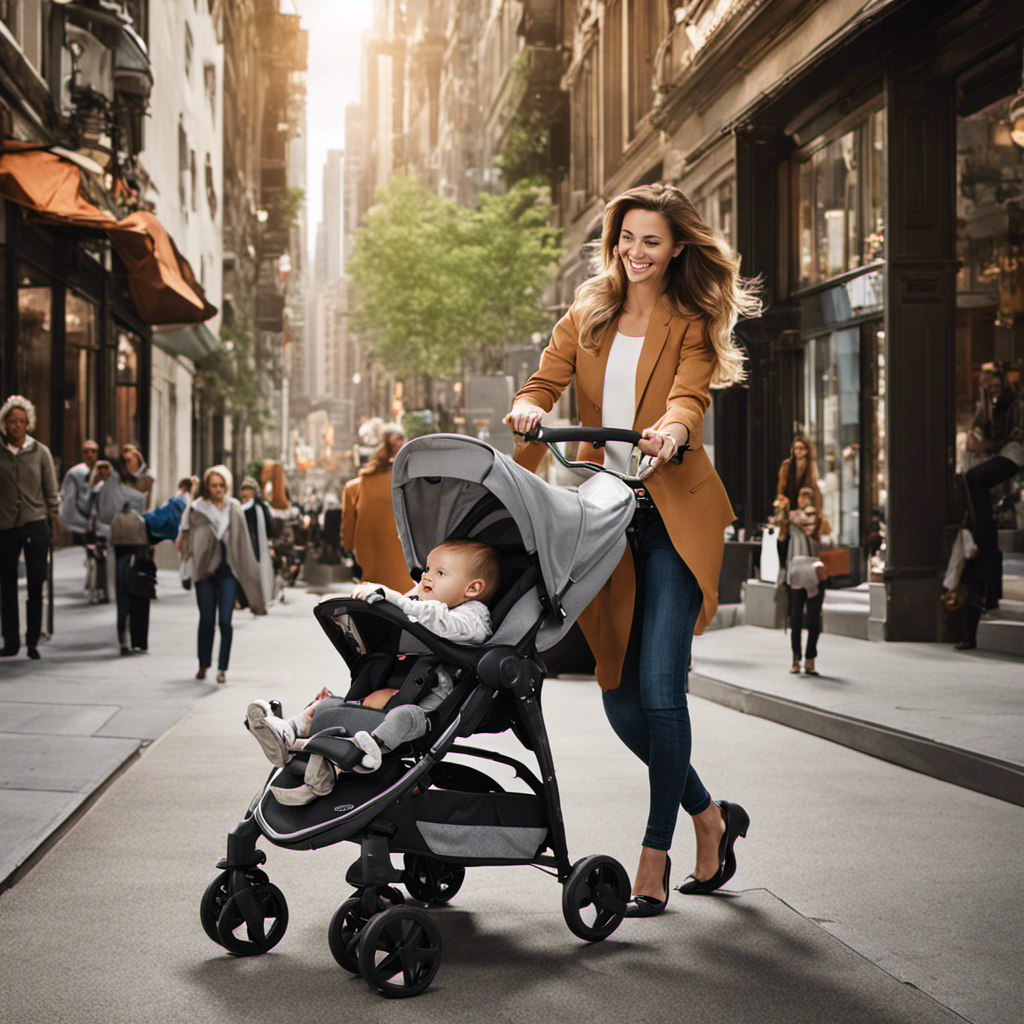
 Guides & FAQs2 weeks ago
Guides & FAQs2 weeks agoThrilled Customer Raves About Graco’s Outstanding Products
-

 Vacuums for Pet Hair Removal3 months ago
Vacuums for Pet Hair Removal3 months agoWhat Is Best Vacuum for Pet Hair
-

 Guides & FAQs2 weeks ago
Guides & FAQs2 weeks agoSydney Customer Raves About Amazing Paint Experience
-
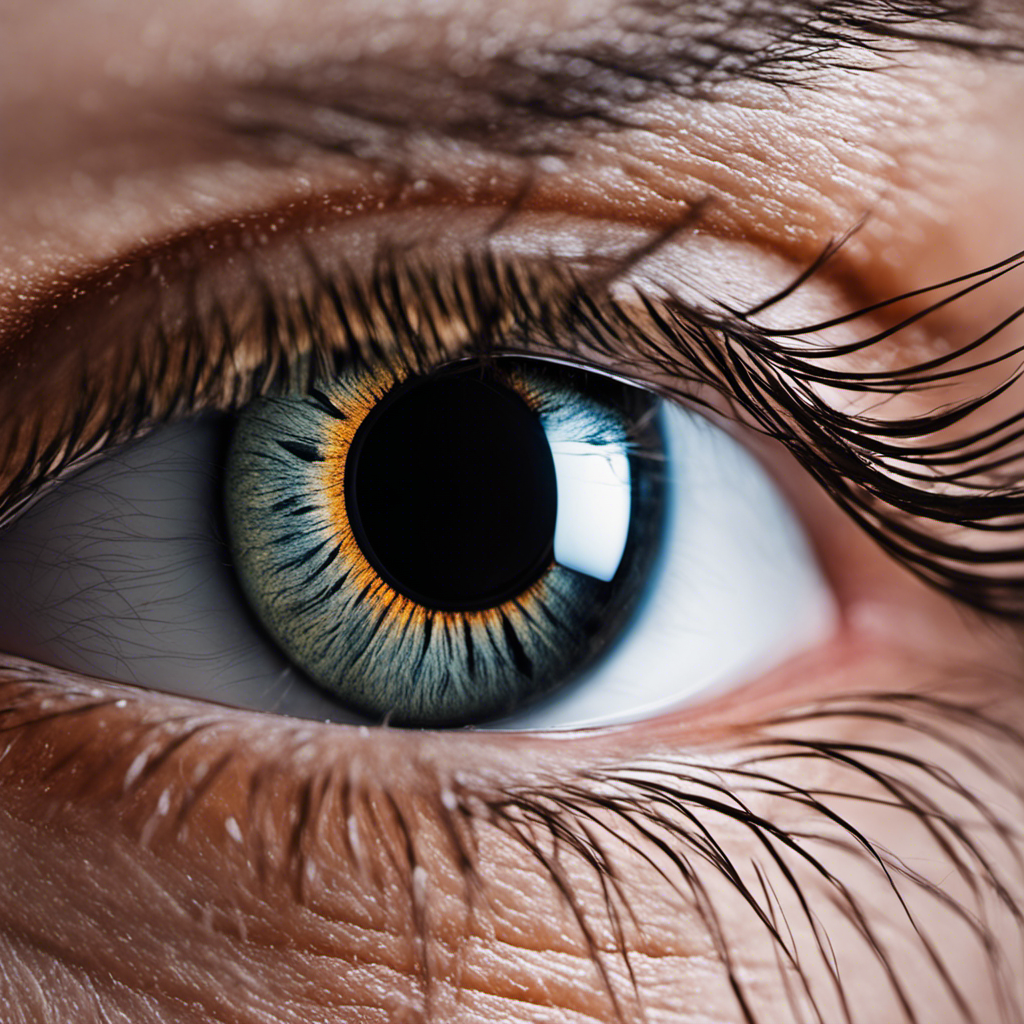
 Guides & FAQs2 weeks ago
Guides & FAQs2 weeks agoPet Hair Under Contact Lense, What to Do
